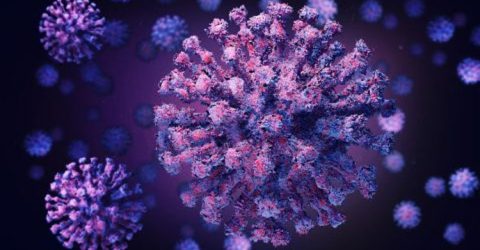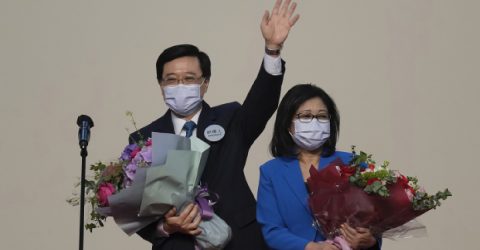
Reportedly, a commissioner of the Dhaka Metropolitan Police (DMP) related to traffic management, gave a power-point presentation of the traffic scene in the city recently.
But as the saying goes that ‘the taste of the pudding lies in the eating’ of it, so people will be only convinced about improved traffic management only after they witness the same as happening. As it is, they have reasons to be cynical about better traffic management because so much have been said about it in the media and many talk shops were held to discuss the problem but nothing positive on a sustainable basis was noted afterwards in helping to ease traffic movement.
People in Dhaka must get relief from the worsening traffic jam related torments they are forced to bear with everyday in the roads of the city. The jams take a heavy toll in the form of lost time, higher depreciation rate of vehicles, higher fuel and transportation costs and severe pressure on the nerves of road users. Traffic jam has become too serious an issue for all classes of people in the city. It needs very focused attention and curative actions not only as an issue that taxes the patience of the city’s residents but as one that causes a senseless drain of many billions of taka in various ways.
There are many areas in the city where opportunities are there to increase the spaciousness of the roads and lanes. In some places, unusually wide footpaths can be reduced in size to extend road widths. At other places, doing away with road dividers will add to road spaces ; the dividers in their present form are seen more as hindrances to traffic flow. In other cases, roads can be widened as there are unpaved spaces on the sides. The doing of these things will involve expenses but not on the scale like building a flyover or a mutlti-storied parking lot. But the relatively inexpensive steps of road widening can contribute notably to ease of traffic movement.
The hawking of merchandise on roads and occupying road spaces thereof is a well identified reason for hazarded traffic flow. Evicting hawkers from roads seems to be a on and off activity. Sometimes hawkers are evicted from roads with drastic steps. But they reappear with full strength after some time has passed. Hawkers allegedly bribe policemen and pay toll to others on a regular basis to carry on their business on the roads without facing any trouble. Thus, policemen do not have any real motive to evict the hawkers but do so from time to time to make a show that they are doing their job.
Besides, the Dhaka City Corporation (DCC) is yet to solve the long lingering problem of accommodating hawkers not on open roads but on vacant spaces-owned by it-near to roads on some sort of rent or lease basis. Only such a solution by the DCC, with no expenditure involved, will not only make the roads appear cleaner but also make them freer for the traffic.
One positive development noted in recent years was the holding of their public meetings by political parties at designated points in the city such as the Paltan Maidan or the Manik Miah Avenue. However, the road blocking culture has not disappeared up to satisfaction. It lingers on considerably in the form of road marches from time to time by activists of political parties, road rallies to observe this or that day and setting up daises and other obstructions on roads to observe religious occasions. The same produce the same effects that used to be suffered by people when roads used to be blocked off by political parties for holding their meetings.
Then, there are other forms of the road blocking culture. Contractors engaged in public works litter construction materials carelessly away from sites where they need to actually undertake the works. This causes traffic jams in adjoining roads and lanes. Some private real estate developers or home builders have the same tendency. The roads and lanes are also narrowed by all sorts of unauthorised structures on them.
Thus, the DCC and other authorities need to introduce and enforce regulations to get rid of road blocking activities in the same manner they got rid of the culture of political meetings on roads.
A major step toward a sustainable solution of the traffic jam problem involves increasing the number of roads and lanes. Ring roads, link roads and bypass roads are still few in number. Therefore, the number of the same must be increased for these to have a relieving effect on jams. Specially, the building of bypass roads will mean that inter district buses and trucks that go through Dhaka city and add to its jams will no longer do so and this should have a positive impact on traffic movement.
The cost of building many such roads would not be even half the cost of building only one flyover but the benefits could be quite a lot. A huge and sprawling city like Dhaka with a huge population should have at least 25 per cent of its area as roads whereas road spaces are only about 8 per cent in the city at present. Clearly, new road building should get priority as a way of easing traffic jams. Not only the roads should be built, the same must be built to be durable and must be maintained throughout the year to ensure ease and speed of movement.
However, only new roads will not bring about a positive change in the traffic scene. Traffic should be habituated also to use the new roads. For example, a number of roads have been built in the city in recent years to ease traffic jams. Link roads were built between Kakrail and Purana Paltan, between Sutrapur and Mothijheel, between Kamalapur and other areas. The Biswa Road was built as a long circular road round the city in the eighties.
But these roads seem to be underutilised and sometimes traffic flow in the new roads appear so thin as to produce an impression that probably a hartal is going on. Long habituated to using the older roads, road users tend to use them and not the new ones despite the obvious advantage. Thus, they need to be persuaded to use the new roads through publicity. Better still, they can be required to pay a congestion surcharge for using the older roads during peak traffic movement.
Shifting of the Dhaka Central Jail and the Hajaribag tanneries from their present locations within the old city should yield much vacant spaces. Apart from creating recreational venues, the same should be utilised to build spacious interlinking roads to reduce traffic jams in the older parts of the city.
There are about 36 rail crossings within metropolitan Dhaka. It was estimated that on average, every day, these crossings hold up traffic for five hours that create regular jams. Thus, these crossings must go and arrangements are to be made for trains to reach stations avoiding the metropolitan areas.
Some big cities in Asia have experimented successfully by changing school hours, banking hours and the timing of commercial activities to prevent all types of road users from using the roads, all at the same time. Perhaps Dhaka can opt for a similar strategy in response to its agonising traffic jams.
Traffic jams can be considerably eased if the current practice of holding up traffic for an inordinate amount of time at intersections through manual signaling by the police, is given up. Why such manual signaling at intersections is resorted to, is a big question particularly after the installing of automatic signaling lights on most of them. Using of the automatic signaling means traffic getting held up at intersections for less time.
Then, there are the cases of trucks plying on the roads in the restricted hours. Trucks carrying goods are supposed to ply only from the late evening hours as per fixed rules of the DMP to ease congestion. But the bribed policemen of the DMP often allow them to move on roads during the busy day hours. They also turn a blind eye if buses stall at busy mid points of roads-causing congestion-to pick up passengers although they can legally stop only at their designated points to prevent traffic jams from building up on their rear ends. Here also bribery of the traffic policemen is involved.
Many things are needed for the sustainable improvement of traffic movement in the city. But at the heart of traffic management are the traffic policemen whose lack of care and corruption, are important factors explaining the current traffic movement related maladies. They must be made to do their jobs with efficiency and integrity.




